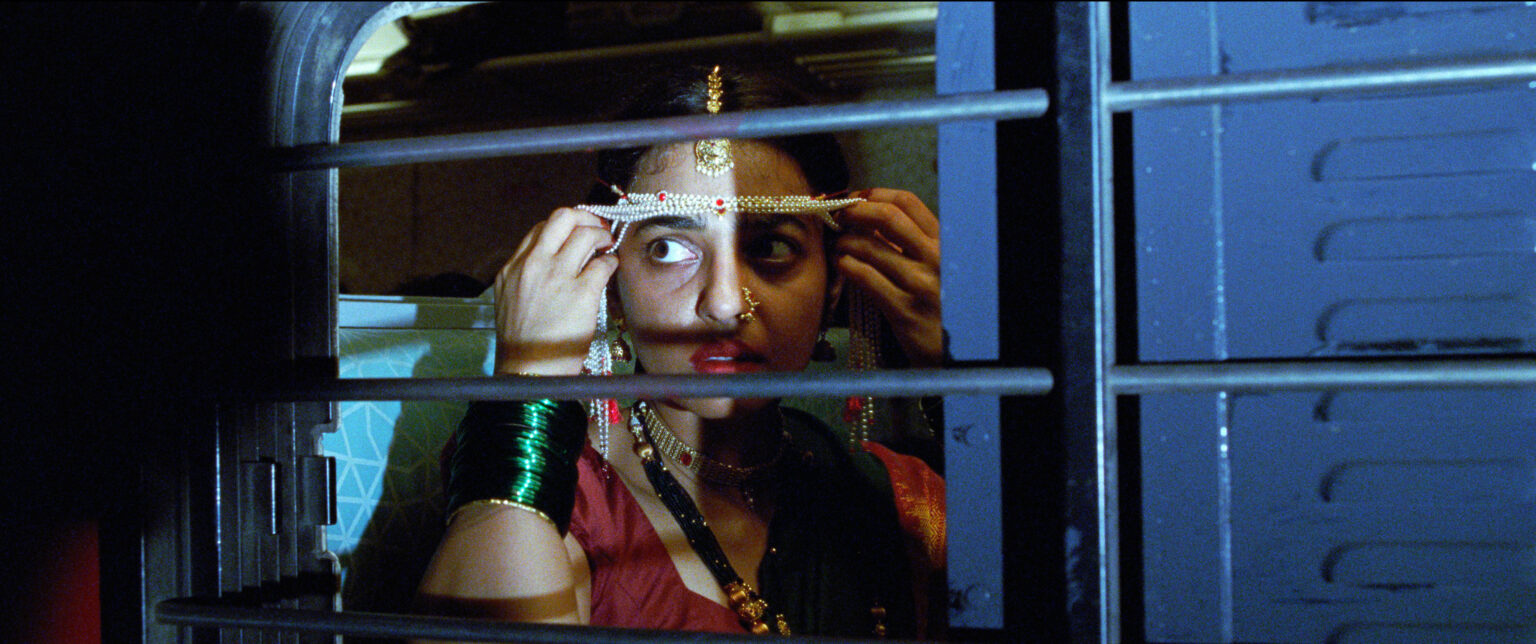“Sister Midnight”: An Unconventional Journey Through Mumbai’s Surreal Landscape
Bold, surreal, and often bewildering, Karan Kandhari’s debut feature, “Sister Midnight,” stands out as a truly original cinematic experience. While it is a vivid portrait of a newlywed couple navigating life in bustling Mumbai, the film’s influences and inspirations are as diverse as its tone. Kandhari, a British-Indian filmmaker, has openly expressed admiration for silent comedy legends like Buster Keaton and Jacques Tati, and these influences are evident in the film’s meticulous framing and slapstick moments that evoke both classic humor and the deadpan precision characteristic of Wes Anderson’s style. However, beneath its playful surface lie darker, more unsettling themes reminiscent of Roman Polanski’s “Repulsion” and Ana Lily Amirpour’s “A Girl Walks Home Alone at Night,” pushing the narrative into disturbing, elliptical territories.
A Kaleidoscope of Styles Set Against Mumbai’s Hustle
Blending these eclectic styles within the chaotic backdrop of Mumbai creates a sensory overload that can be disorienting for viewers. The soundtrack alone-a mix of Howlin’ Wolf, T. Rex, Buddy Holly, and Cambodian pop-adds to the film’s frenetic energy. At its core, “Sister Midnight” centers on a mismatched couple whose contrasting personalities and expectations set the stage for a story that defies conventional storytelling. Gopal (Ashok Pathak), shy and reserved, contrasts sharply with his wife Uma (Radhika Apte), a fiery rebel who resents her confinement at home while Gopal works tirelessly outside. Early on, the narrative humorously questions their union, with a neighbor’s dismissive remark: “How did those two village idiots get married? He’s a loser, she’s insane-families just pushed them together.”
From Comedy to Surreal Horror: A Shift in Tone
The initial scenes lean into offbeat comedy, as Uma attempts to master domestic chores under the watchful eye of a bored neighbor (Chhaya Kadam) and gradually resists her husband’s attempts to keep her confined. Her nighttime excursions into Mumbai lead her to a cleaning job, where she encounters a disillusioned boss (Subhash Chandra) who responds to her concern with a bleak humor: “This is just how God painted my face.” As the story unfolds, “Sister Midnight” explores themes of loneliness and alienation, transforming the crowded city into a blank canvas for Uma’s inner turmoil. Kandhari’s narrative takes an unexpected turn into the macabre, introducing bizarre elements like stop-motion zombie goats and birds-an oddball, semi-comedic nightmare that defies easy explanation. Like Uma herself, viewers are invited to simply accept these surreal occurrences and go along for the ride.
Radhika Apte’s Magnetic Performance
The film’s greatest strength lies in Apte’s compelling portrayal of Uma. An actress renowned for her versatility in Bollywood, Apte brings a rebellious spirit and a commanding physical presence that perfectly embody Uma’s disjointed fury and her shocking, unpredictable actions. Kandhari’s deliberate framing-shot by cinematographer Sverre Sordal-heightens the sense of comic menace, balancing moments of humor with underlying unease. Apte’s fearless commitment to her character’s arc makes her both amusing and deeply unsettling, anchoring the film’s bizarre tone with authenticity and intensity.
Thematic Layers and Narrative Ambiguity
“Sister Midnight” is ultimately a cinematic voyage into the depths of loneliness and existential dread. Its depiction of Mumbai-a city teeming with life yet strangely impersonal-serves as a backdrop for Uma’s fantasies of alienation and rage. Kandhari’s storytelling deliberately avoids traditional narrative clarity, opting instead for a dreamlike, sometimes nightmarish atmosphere. The film’s surrealist elements, including the bizarre zombie animals, serve as metaphors for inner chaos and societal disconnection. However, this approach also results in a narrative that unfolds rather than progresses, gradually folding into itself with a poetic, almost sighing, sense of resignation.
Is “Sister Midnight” for Every Viewer?
If you prefer films that adhere to logical progression and clear storytelling, this movie might not be your cup of tea. Yet, for those interested in witnessing a talented director experimenting with fragmented visions and an actress unafraid to explore uncharted emotional territories, “Sister Midnight” offers a compelling experience. As Uma confesses midway through her journey, “I am this thing, but I don’t know what,” reflecting the film’s core mystery-both her character’s and the director’s ongoing quest to understand their own creations.
Final Thoughts and Viewing Details
Unrated and screening at the Angelika Film Center, “Sister Midnight” contains intense violence, language, and drug references. Its runtime is 107 minutes. This film is a bold, experimental piece that challenges conventional cinema and invites viewers into a surreal, often unsettling world. Whether it’s a masterpiece or a flawed experiment, it undeniably showcases Kandhari’s unique vision and Apte’s fearless performance, making it a must-watch for cinephiles eager to explore the boundaries of storytelling.
– Ty Burr, author of Ty Burr’s Watch List at tyburrswatchlist.com

